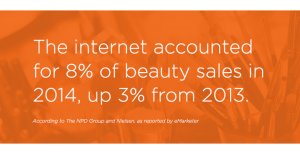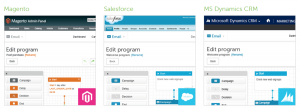Blogging is a valuable marketing tool that can increase your online authority, drive traffic to your website, boost your conversions, and increase your sales.
Business blogging is an excellent way to establish your thought leadership by sharing your knowledge with your readers in a way that provides value.
Today, consumers are more savvy and tired of the hard sell of traditional advertising. They are seeking relevant, helpful information to guide them through their decision making process.
Business blogging is a way to help them on their journey. You can build trust and establish the types of personal relationships that drive sales through blogging.
If you’re not familiar with the ins and outs of business blogging, we’re here to help! Here is everything you need to know to get started using this powerful marketing tool to drive traffic to your website, increase conversions, and grow your business.
Business Blogging Basics: How to Get Started
Choose Your Platform.
Choosing the right blogging platform is the first step. For many businesses that have a WordPress or Squarespace website, adding a blog is as easy as adding a page to your site.
If you don’t want to add a blog directly to your website, there are several other good free platforms, like Blogger, WordPress, and others that you can use that allow you to set up a free blog, which you can then use to direct traffic to your website.
You can also use social platforms like Facebook, Instagram, or Medium to increase exposure quicker than blogging on your company website.
But before we get ahead of ourselves, often the best business blogging platform, over the long term, is your website. By using internal links, you can direct readers to other useful information without having them leave your site.
Create Buyer Personas.
After you’ve determined your blogging platform, the process of creating content can begin. The first step is to determine who you are trying to reach, known as your target market.
Chances are, if you already have a digital marketing strategy in place, you’ve already taken this step. But let’s quickly review the process. The way you determine who you are trying to reach is by developing buyer personas.
A buyer persona is a semi-fictional depiction of your ideal customer. You create personas by using a combination of factual information based on your past and current customers, and additional data that you determine based on logical assumptions arrived at by answering logical questions.
Let’s look at an example of a buyer persona.
After reviewing your customer data, you find that your customer base is 63 percent male and 37 percent female. Their average age is mid-thirties.
They work for businesses within a 200 mile area of your office and are in middle-management. They purchase your product or service an average of every three months. This is the factual base for your personas.
Next, ask questions and answer them in the way your customers would. For example, what are their pain points? What solutions can you offer them to address their pain points? Why do they choose to work with your company as opposed to a competitor?
Each of these questions will add another layer of depth to your personas.
By understanding who your target audience is and their needs, you can then begin the process of creating content that is relevant, tailored to meet their needs and answer their questions. This is how you build authority, trust, and thought leadership.
Identify What Content to Write About.

Think about your business, your customers, and your target audience. Focus on topics that will be of value to them, whether it’s information, product reviews, facts about your industry, and anything that can address their questions, needs, or pain points.
You can share insights about your business, introduce new products, promote your corporate philosophy or culture, or even answer frequently asked questions.
For example, if you’re a design-build contractor, write about the top new professional home appliances for the current year or the benefits of quartz countertops over natural stone.
If you own a restaurant, offer recipes, stories about your locally sourced produce, or the best wine to pair with filet of sole.
The main goal is to provide the information that your customers are seeking, while humanizing your business and offering them a peek behind the curtain.
Your content should be informative, educational, or entertaining. Avoid selling. Instead, focus on providing value to your readers.
8 Tips For Writing Better Business Blogs
While maintaining a high frequency of posting is a good idea, there’s more to it than just dumping a random article on your website every few days.
You need to write better blogs – ones that readers will actually enjoy or benefit from. Good blogs capture the attention of readers, making them more likely to want to engage with your company.
With that in mind, here are a few tips for writing better business blogs:
1. Don’t Just Sell Stuff.
There’s a time and a place for a blog that puts forth your product as the solution for the reader to buy. People don’t generally come to your blog looking to get sold a product.
Instead, they’re there looking for help and advice.
If all of your blogs are just “X reasons why our product rocks,” don’t expect to keep readers for long. Now, don’t get me wrong, taking a few minutes to highlight your product on the blog every once in a while isn’t the worst thing in the world – but it shouldn’t be the focus of everything you write.
The goal of a blog should be to do one of the following:
- Solve some problem for readers
- Educate readers
- Entertain readers
So, when you write a blog, keep in mind what you think your readers would want from it, and write it in a way that addresses that desire.
2. Be Relevant
You’ve identified your target audience and gained an understanding of their needs and pain points. Now offer them a solution. Keep your blog focused on providing them with value.
3. Create a Content Calendar.
Business blogging is a process. One or two randomly posted blog articles are not going to drive traffic. You need to be consistent.
Set up an editorial calendar to organize your publishing schedule. Plot out important dates, like busy sales seasons, holidays, or anything else that affects your sales. Then publish relevant information around those dates, while maintaining an ongoing schedule of content production.
4. Stress Quality, Not Quantity.
Keep your posts focused. You don’t have to write a 2000 word post to be effective, but you also don’t want to put out thin content either.
Consistent quality content will get you noticed by the search engines (more on this in a minute) and your readers.
5. Write About What You Know.
The best way to build your blog is by writing about topics that you understand and are passionate about. If there are aspects of your business that you are not an expert in, consider outsourcing or inviting guest bloggers to write about them for you.
It’s a good practice to include different perspectives to keep your blog fresh and relevant.
6. Think About How Your Blog Looks.
This step is something that you can worry about after you’ve written your rough draft, but it can have an impact on how your blog is perceived by readers.
When someone looks at your blog, is it just a massive, nigh-impenetrable wall of text, or is it something that’s fun and easy to read? Odds are that people will like the “easy to read” option better.
There’s a lot that can go into the visual appeal of your blog, such as:
- The blog post’s length
- Size of individual paragraphs
- If/how you use images and bullet lists (like this one) to break up the text
- Header text
- Use of bold or italic text to draw the eye
- The layout/design of your blog page
All of these elements can affect the visual appeal of your blog as well as its readability.
A long, blocky article with no visual breaks and a bland design just isn’t going to capture a reader’s attention like one that has well-placed pictures, easily-searched headers marking out different sections, and other visually impactful details.
7. Give Your Reader Something to Do After Reading.
The end of the blog is a great chance to convince the reader to take some kind of action while they’re thinking about the subject.
When giving the reader something to do after reading your blog, consider what kind of blog you’ve written. Who’s the audience, and where are they in the buyer’s journey?
The next steps for someone who’s just starting to think about a problem they have is going to be different from the next steps for someone who’s trying to decide on a solution, after all.
8. Engage With Your Readers.
One key point to blogging is having the ability to engage with readers. Always end your post by inviting readers to comment. Respond to any comments quickly and professionally.
Remember, you are your brand’s ambassador! Building personal relationships is the best way to drive sales.
Creating consistent, high-quality content is the best way to drive traffic to your website, engage with your readers, increase conversions, and grow sales.
Business blogging is a valuable tool that can help you to grow your business. With a little planning and a consistent approach, your business blog can become a valuable component in your company’s overall digital marketing strategy that will provide you with real results!
Digital & Social Articles on Business 2 Community
(34)








